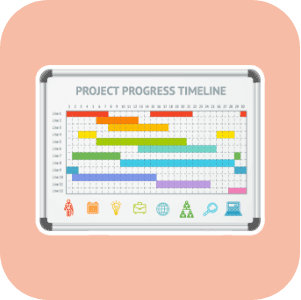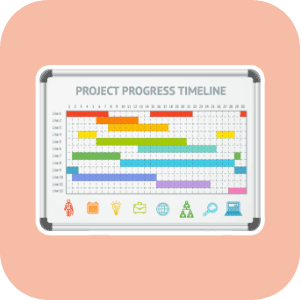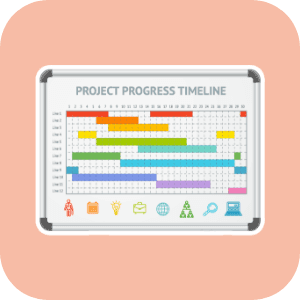
Building a Culture of Collaboration
You have heard some companies are creating a culture of collaboration. You have heard these companies are succeeding. You want in but you don’t know how and why? Hopefully, by the end of this piece, you will have an idea of what a culture of collaboration is as well as how to go about building one for your company, office or team.
So, what does it mean to have a culture of collaboration?
In a nutshell, a culture of collaboration can be explained as an environment where all of your employees are contributing their expertise or skills towards a common goal. You are drawing on the specific strengths of specific employees to innovate, solve problems, create new products and projects, together. You are drawing from Sipho’s talent for planning and organization, along with Betty’s knack for creating workflows and project steps. Jane is on board and adding her bit to the execution of the project and Kalpesh is your doer. He is the guy that gets things done and thrives in an atmosphere where trust and clear communication are front and centre. Finally, Thandi has a talent for making things shine. She works together with the rest of the team and puts the finishing touches on the project, so it has that professional shine to it. As the leader of the broader team or the whole company, you would surely understand the benefit of collaboration to your company and your team in general.
Here is the thing though, none of this really works unless you as the leader can create an environment where this type of teamwork and collaboration can thrive. Let’s have a look at some pieces that need to be in place for this puzzle to be complete and then we can look at how to bring these pieces to the fore so that they fall into place naturally. That’s an important word, naturally. Even though you are actively creating the right atmosphere for collaboration, you can’t force it, but, if everything is in place your employees should naturally integrate into the new environment. It will happen, you just need to provide the pieces.
The first piece and one of the most important is trust.
In order for this culture to thrive, it is essential for your company to demonstrate the value of trust, always. You need your staff to trust each other. This requires safe relationships between all members. When trust is lacking, team members will not likely feel encouraged to speak up and add to the project. They will be unsure of how the other members of the team are going to react to their ideas and suggestions. As a result, the whole exercise is a non-starter. Another thing you need is trust in the project. You need every member of the team to be invested in the project and trust that the outcome will be what was envisioned from the beginning, or better.
The next piece is effective and detailed communication.
Almost every single company that is very successful has this piece in place as a rule. Creating an environment where information is communicated clearly and effectively across the whole company. This is important as it guides your team into communicating effectively with each other and this eventually becomes second nature to everyone in your organisation. Trust me, you need this for collaboration to thrive. Giving your staff this skill means they will be more confident in discussing any and all aspects of the collaborative project.
Sharing of skills and knowledge
Sharing knowledge and skills across the team is vital for not only creating an environment where collaboration will take root but, it is generally better for your business anyway. Many companies have a culture of competition where individuals are rewarded for what they do instead of teams being rewarded for what they do. In a competitive work environment, senior employees are often not too excited about sharing skills, knowledge, and special methods and techniques with someone they feel they are competing with. Trust me, no one is collaborating in this kind of environment. It just will not happen. Whether you are trying to build a culture of collaboration or not, this kind of competitive atmosphere is toxic to the general development of your team as a whole and hits right at the heart of trust.
You also need transparency.
Transparency is an essential piece of the puzzle.
When all information is communicated transparently, everyone in the team feels comfortable with what is going on. Everyone is on the same page and understands what is happening with the company. Everyone in the team that is collaborating knows where they stand and will more than likely feel positive about the project when they understand the whys. They are more likely to share skills and information and most importantly this builds a culture of honesty. Nothing kills trust and buy-in quicker than communication that is not transparent, purposefully incomplete, or not 100% honest. Your team will pick this up quickly and they won’t be thanking you. This will also damage that trust you have been working on.
Creating spaces specifically for collaboration to occur is the next piece that needs to fall into place.
It isn’t business as usual; you are trying to create a different environment to what you have now. This is not as easy as it sounds. One of the things you could do that will help get things going is to create a space that is specifically for collaboration and teamwork. So, what does this space need, you ask? Great question, I can see you are not thinking about how to do this. Choose a space that is neutral to all teams and all levels of seniority. A space where different employees from all different teams can feel comfortable to share and discuss. Have some whiteboards and comfortable seating available as well as any specific technology that is going to help bring these ideas to the fore.
Tools.
Give your team the tools that will enable them to get the best job done. Having everything else but the right tools for the project will cause the project to lose momentum and your staff will feel less inclined to rock out a mind-blowing collaborative project if they know they are going to struggle with the incorrect tools. This can be physical tools or anything tech related.
Engagement
This last piece of the puzzle kind of falls into place by itself when everything else above is working.
This piece is engagement.
Collaboration requires communication, respect, and a safe environment. Once the members of the team feel engaged, they will approach their tasks with more energy and excitement. They understand why they are doing what they are doing, and they know that everyone in the team is working towards the same end goal. Together. Sounds like a winning formula to me.
Over and above the mentioned puzzle pieces, there are a few more things you can do to create the environment you desire. In your communications, create and share the vision for the project. What is the desired outcome? How is the team going to achieve it and where is collaboration essential to the success of the project?
Develop or acquire leaders who are already integrating collaboration into their leadership style. Reward these leaders for getting this right. This will incentivise other leaders in the group to begin adopting this leadership style.
Rework and adapt your workflows and processes to encourage collaboration. When you are looking at the steps needed for the project to be complete, you will likely identify exactly where collaboration needs to happen and specifically communicate this with the team. Remember, always communicate transparently so everyone is on the same page. Going along with this, you can also purposefully create projects where collaboration is required. Like your warehouse manager working on a project with the buyer and stock control manager to create an ordering system that uses the skills of each involved to make the process easier and more efficient. This is sure to have each member of the team working on the project putting their absolute best forward to make the project a success. People have this knack for pushing others to give their best. Wonderful problems to have. You can also identify areas for collaboration in your current process and use those to get the ball rolling. You also need your team members to build meaningful relationships with each other. This happens best and most effectively out of the work environment. This could take the form of a teambuilding event, retreat, off-site get-together, and even some fun office games. Importantly let your staff engage with each other casually every day and communicate that this is perfectly fine and actually desired. This is how your team builds meaningful relationships based on trust and respect. In case you missed it, you absolutely need this for collaboration to work.
Finally, you need to embrace each individual’s differences. With these differences come strengths and weaknesses. Identify them and develop where it is needed and use the expertise where it is needed. You would also do well to use one’s expertise to develop another team member who lacks that specific skill. Winning!



















































